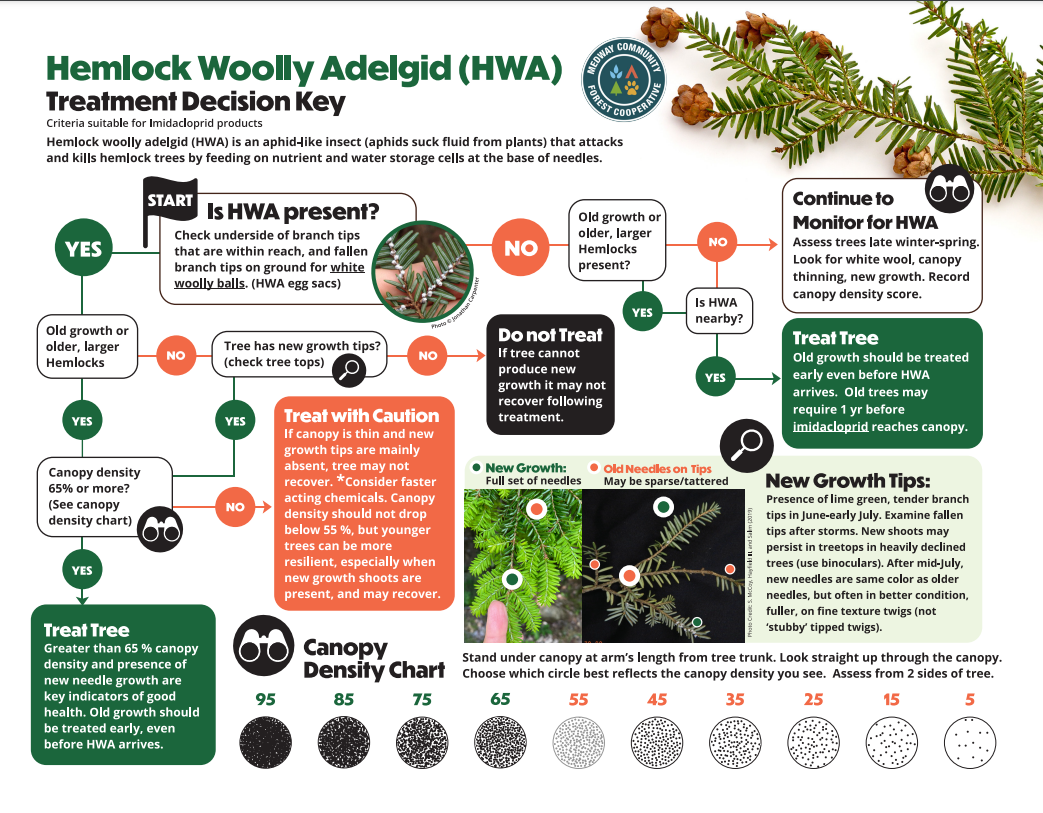What are my options?
Taking a multi-pronged approach to saving hemlocks
At least 80% of infested hemlock trees are expected to die within 4–15 years. For many landowners, treating all trees or stands will be too costly or undesirable. Individual trees may possess some level of resistance to HWA and will be extremely important for the survival of the species. As hemlocks die, other species will become more dominant. During this transition, the dead standing and fallen hemlock will provide valuable habitat for a variety of birds, mammals, and invertebrates. Understanding what to expect when hemlocks die, and how to encourage a healthy new stand of trees in the future will be important for many.
Hemlocks can be protected from HWA by treatment with systemic insecticides. This is currently the only certain way that we know of to save hemlocks in the short term. In Canada, there are four insecticides approved for use in Canada through Health Canada’s Pest Management Regulatory Agency. Trees remain protected against HWA for up to 5 years. The injection process is costly, so prioritizing individual trees or valuable stands is strongly recommended. To learn more about what is available, how to prioritize trees and stands, the costs and benefits of various options, and certified applicators, visit the Chemical Treatment page.
Long-term stand management should be ongoing to promote overall stand health and resilience against stressors. Prior to HWA impacts, stand thinning may promote hemlock growth, boosting its tolerance to HWA infestation, although this approach alone is unlikely to be sufficient in the long term. Following HWA detection in your stand, removal of highly infested trees (hotspots) may slow down the further spread of the pest. Pre-emptive cutting of healthy hemlock stands in anticipation of HWA is not recommended, as it could result in the loss of resistant hemlock, and dramatically impact the associated habitat. Visit our Silviculture page for more information on silviculture trials.
Biological control is on the horizon! The introduction of specialist natural enemies of HWA is the only long-term, region-wide strategy to ensure persistence of hemlock on the landscape. Members of the HWA Working Group – Maritimes are actively researching the potential for releasing predators of HWA to help control the populations of the pest. Biocontrol is not a simple or quick process; however, we remain optimistic that it will begin to play a key role in the management of HWA over the next 10-20 years and is another reason to leave uninfested hemlock in the forest. Visit our Biocontrol page for more information on biocontrol research.

